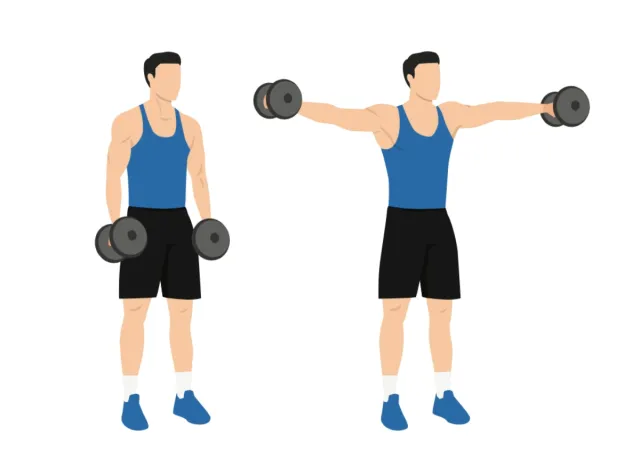
Gradually, your running minutes in your walk-run will increase while your walking minutes decrease. As you get to the tail end of the plan, you should be well-prepared to run a solid chunk of time straight.
But even after you’ve built up the endurance to jog without stopping, it’s still worthwhile to continue interspersing walks into your runs. According to 2016 research published in the Journal of Science and Medicine in Sport, doing so can decrease muscle discomfort (more on that all-too-common running side effect below) without actually slowing down your finish times in races.
2. Cross-train to incorporate movement that doesn’t overstress your body.
If you’re paging through a beginner 5K plan, you’ll probably notice there are some workouts on the schedule that don’t involve walking, jogging, or running at all. And there’s good reason for that: You need to do more than just running if you want to help prevent injury and reap the greatest rewards from your training plan, Wijayaratne says.
Enter cross-training (and, as we’ll touch on later, strength-training). The term “cross-training” refers to any type of cardio that isn’t running—think indoor cycling, swimming, or the elliptical—as well as exercise modalities like yoga and Pilates. Including at least one day of this per week is an important addition to any beginner 5K training plan.
The choice of workouts is up to you. Decide based on what you have access to, what feels right for your body, and what you find enjoyable, says Wijayaratne. Just keep it low-impact—that way, you’re truly giving your body a break from the force of running.
READ RELATED: Covid booster vaccine: Nine bodily reactions to the jab that protects you against Omicron
This might be a day to get your family involved with a group hike or bike ride, Athena Farias, an exercise physiologist, certified personal trainer, and running coach at Get Fit SATX, in San Antonio, tells SELF. Or, you might crave alone time on the mat, in which case yoga might be a better fit.
Any type of low-impact movement will increase blood flow through tight, tired muscles, helping you feel more recovered for your next run. Yoga and Pilates also enhance flexibility and build core strength, which can improve your running form.
Other aerobic exercises, such as cycling and the elliptical, have the added benefit of increasing your endurance—your capability to sustain a harder effort, like running, for a longer period of time without tiring—but without adding additional stress or pounding on your joints, Gracey says.
While Gracey gravitates toward the stationary bike or the elliptical, Wijayaratne opts for swimming, when she can (access to a pool can be tricky, she acknowledges). “There’s so much packed into it,” she says, “including muscular benefits and incredible cardio.”
3. Build strength as a further buffer against injury.
Unlike swimming or cycling, running is a high-impact activity; there’s a reason people refer to “pounding the pavement,” after all. The force of foot-against-road has its benefits—for instance, running increases bone strength.
Source: SELF










